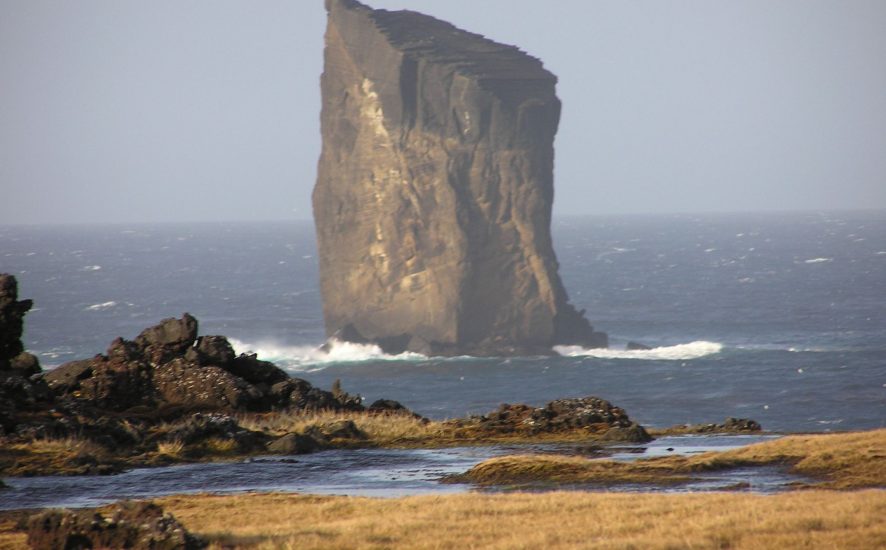Boot Rock is situated c. 850 m offshore of the northern part of Marion Island between Cape Davis and Storm Petrel Bay. It is a very prominent offshore sea stack with vertical sides and a sloping top, rising straight out of the sea, described by geologist Wilhelm Verwoerd as “built of massive grey basalt capped by massive to thinly bedded tuff of the older succession”. Some tumbled rocks can be seen at its base among the surf. Its black colour helps to make it stand out.
The stack was named for its “most curious resemblance to a sea boot” by Captain Sir George S. Nares of the H.M.S. Challenger on its visit on 26 December 1873. However, Boot Rock was first remarked on and charted by Captain James Cook (without, however, giving it a specific name) when he sailed between the Marion and Prince Edward Islands in the Resolution and Discovery on 12 December 1776: “On the north side of each [island] is a detached rock, that near the South island [Marion] is shaped like a tower and seemed to be some distance from the shore”.
The French naval corvette L’Héroîne (Capitaine (later Admiral) Jean-Baptiste Thomas Médée Cécille) passed Marion Island without landing in November 1837 and gave the rock its first name of ‘Le Prince’. Commander Francis R.M. Crozier of the Terror (on an Antarctic expedition as second-in-command to Captain Sir James Clark Ross on the Erebus) sailed past Marion’s north coast on 22 April 1840 and mentions “a remarkable detached tower-shaped rock at some distance off the North Cape”– which must be Boot Rock. Cape Crozier on Marion Island is named after the Terror’s Captain. John James Wild, a scientist aboard the Challenger, thought that Boot Rock “…dimly seen through the mist, might be mistaken for a ship under full sail”.
It has been said that a South African Air Force Flight Engineer in a SANAP Aerospatiale Puma helicopter leant (or climbed) out and collected a rock as a souvenir from the top of Boot Rock, following a one-wheel touch-down some time in the 1980s. This account still needs confirmation. It seems unlikely the rock will ever be climbed from the sea.
Text adapted from “Red Scoria Breaks the Island Mist: A Historical Gazetteer of the Geographical Features of the Prince Edward Islands”, a work in progress.
Feature photograph: Boot Rock, by Tom McSherry, M63, 2007
John Cooper, Principal Investigator, Antarctic Legacy of South Africa, Department of Botany and Zoology, Stellenbosch University, 09 August 2016

